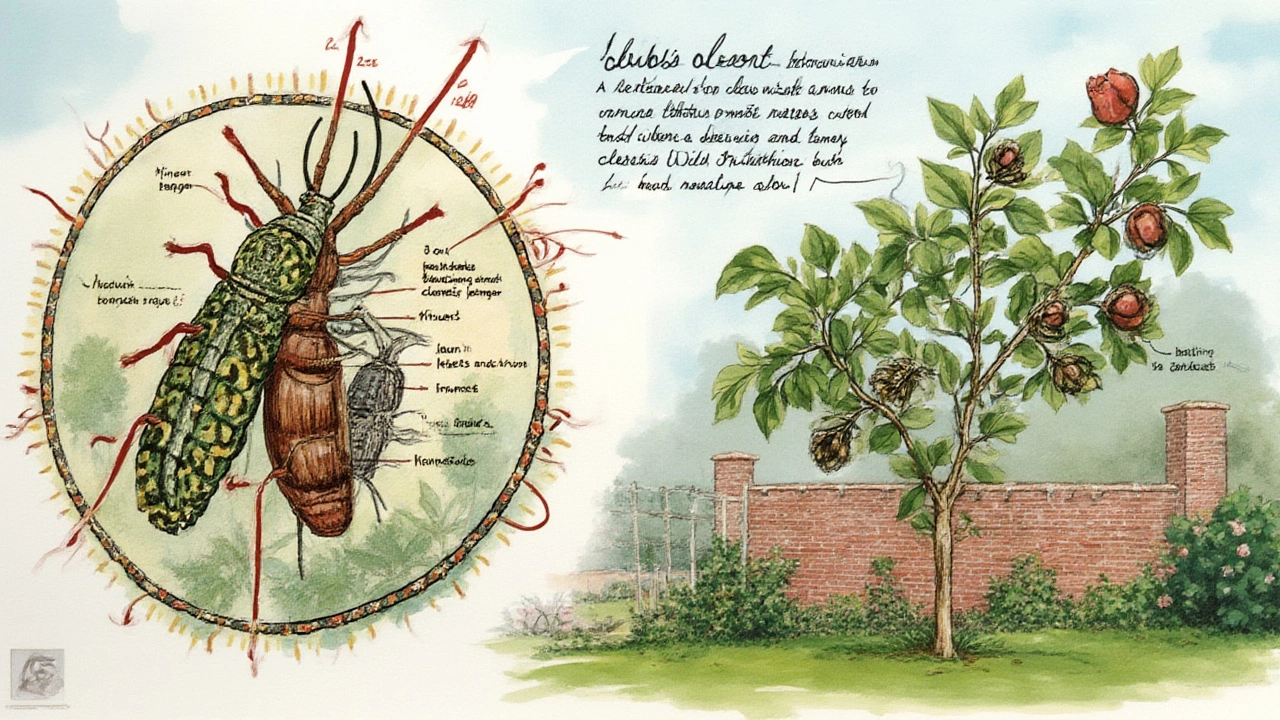If you’ve ever watched your houseplants wilt before your eyes or seen your vegetable patch ravaged in a matter of days, you know how relentless plant pests can be. But not all pests are created equal—some are way more persistent, sneakier, and annoyingly immune to your usual tricks. Among this wild bunch, there’s one invader so tenacious, gardeners from Brighton to Birmingham would rather face a weeding marathon than confront it: the mealybug. They aren’t just tough—they’re maddening. These fluffy, pale sap suckers seem like tiny cotton balls, but don’t let appearances fool you. Once they move in, clearing them out feels like trying to rid your kitchen of glitter after a party: almost impossible.
Why Mealybugs Are the Ultimate Headache for Gardeners
Mealybugs earn their bad reputation honestly. Even a handful can devastate prized succulents, ferns, orchids, citrus, and houseplants in no time. The first time you notice a sticky residue and a white, fluffy mass nestled at leaf joints, you’re already way behind. Here’s what makes them an absolute nightmare:
- They’re masters of hiding. Mealybugs wedge themselves in plant crevices, under leaves, at the base of stems, and even in pots. You’ll rarely spot all of them at once.
- Their waxy coating acts like a shield. Common sprays or soaps slide right off.
- They reproduce fast. Females lay hundreds of eggs in filmy sacs, and these hatchlings are ready to explore fresh leaf territory almost right away.
- They’re patient. Even after you think you’ve cleared them, hidden eggs keep the cycle going.
- They attract ants. Ants love the sweet honeydew mealybugs excrete, and will defend their pests from predators and even your efforts to remove them.
This isn’t just anecdotal. The Royal Horticultural Society lists mealybugs as one of the UK’s most persistent indoor pests, noting their increase with the rise in popularity of houseplants and heated conservatories. Greenhouses across the country struggle with mealybug infestations especially in warm, dry conditions—prime breeding ground.
Another fact: mealybugs aren’t just houseplant pests. They’re notorious on citrus trees, ornamentals, and in commercial greenhouses where they cause millions of pounds of crop damage each year. The UN’s Food and Agriculture Organization has tracked financial losses tied directly to mealybug infestations in tropical and subtropical climates.
Fighting mealybugs isn’t just about saving your begonias. Left unchecked, their damage goes beyond cosmetic. They weaken plants, stunt growth, and invite even nastier issues such as sooty mould—a black fungus thriving on that sticky honeydew. In time, a bad infestation can wreck entire plant collections, both indoors and out.

What Makes Mealybugs So Hard to Eliminate?
If you’ve gone a few rounds with mealybugs, you already know most treatments feel like bailing out a sinking boat with a teacup. The secret to their winning streak is all about biology and behaviour:
- Stealth and Surfaces. Mealybugs nestle in the tiniest nooks—where sprays and cloths can’t reach. Their bodies are covered in a waxy fluff that repels water and chemicals.
- Life Cycle Tricks. Most insecticides don’t kill the eggs. Once the adults are gone, a fresh crop emerges days or weeks later.
- Protection from Allies. Ants act as unwilling bodyguards, warding off predators and spreading infestations between plants. This symbiotic relationship keeps mealybug populations booming.
- Resistance. Like many pests exposed to repeated chemical use, mealybugs build immunity. That’s partly why so many indoor gardeners shake their heads at shop-bought sprays or miracle solutions. Even neem oil can be hit or miss if not applied just right.
Here’s something not many realise: mealybugs can survive for weeks without food, lurking in soil, cracks, or under loose bark. When you think you’ve got them licked, they reappear—sometimes hitching a ride on new plants or tools.
And speaking of soil, mealybug nymphs can drop into the soil and survive. Root mealybugs go even deeper—not just feeding on roots, but waiting out treatments aimed at leaves and stems. Even a repot isn’t always a cure: eggs and crawlers may cling to pot edges, old compost, or the smallest bits of root left behind.
For growers, this all means you need more than hope and a quick spray. Persistent, multi-pronged battles work best. Understanding how, when, and why mealybugs survive each attack is the key. Combining vigilance with practical approaches (and a little creative aggression) ups your odds big time.

The Best Tactics (and Secret Weapons) to Win Against Mealybugs
I’ve tried everything from picking mealybugs off with cotton buds dipped in alcohol to setting up bug-busting teams of ladybirds. Spoiler: some methods really do work—if you stick with them and attack the pests on all fronts. Here’s the game plan used by gardeners who’ve finally seen victory:
- Isolate the enemy. The second you spot mealybugs, pull that plant away from others. This blocks new infestations. Wipe down tables and pots to remove any stray crawlers.
- Manual removal. Mealybugs hate a brisk swipe with a cotton bud dipped in isopropyl alcohol. This dissolves their wax, killing them quickly. Don’t forget to get under leaves, in leaf joints, and around the base—anywhere that fluff appears.
- Repeat, repeat, repeat. Don’t expect all bugs or eggs to go in one go. Repeat treatments every 3–7 days for a month to break the life cycle. For bad infestations, careful pruning of heavily infested bits helps a lot.
- Biological control. In greenhouses, introducing lacewing larvae, ladybirds, or even predatory beetles works wonders. These bugs hunt down mealybugs relentlessly. Just keep ants away or introduce beneficial nematodes for root mealybugs.
- Regular washes. Take smaller plants to the sink and spray with a strong jet of water. It knocks off adults and washes away honeydew. For larger garden plants, occasional hosing works, but do it gently to avoid plant damage.
- Boost plant health. Stressed, weak plants attract more pests. Water correctly, fertilise wisely, and make sure your plants aren’t overcrowded. Healthier plants can shrug off modest attacks much more easily.
- Use horticultural soaps and neem oil properly. These can work as long as you reach all affected surfaces and repeat applications. Always follow the label closely, and remember: complete coverage is key.
- Cut off the ant supply line. Growing sticky traps or using ant baits will keep ants from defending mealybugs. No allies, fewer pests.
- Don’t forget about the soil. Change out potting mix for badly infested indoor plants. Wash roots in lukewarm water for a thorough reset. For root infestations, try soil drenches with approved insecticidal solutions or biological treatments.
- Clean your gear. Trays, pots, shears, and even watering cans can spread mealybugs. Rinse tools in soapy, hot water after working on an infested plant.
Want some numbers? Here’s a quick comparison of common pests and how persistent they are to fight:
| Pest | Visible Damage Timeline | Average Reinfestation Time | Hardest to Eliminate (1–10) |
|---|---|---|---|
| Mealybugs | 7–14 days | 2–4 weeks | 10 |
| Aphids | 3–10 days | 2 weeks | 6 |
| Spider Mites | 5–14 days | 2–3 weeks | 7 |
| Whitefly | 5–10 days | 1–2 weeks | 8 |
| Fungus Gnats | 5–14 days | Up to 1 month | 7 |
The hardest plant pest to get rid of consistently comes out as mealybugs, especially for indoor and greenhouse growers. The trick isn’t just throwing more products at the problem—it’s sticking with routine inspections, tight hygiene, and smart, multi-step strategies. Start early, act quickly, and stubbornly keep at it. Only then will your plants breathe easy again.
